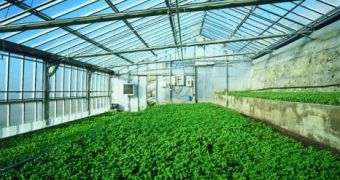Over the past few years, greenhouses gained a negative reputation, if only by associating their name with terrible words such as greenhouse effect, greenhouse gases and so on. But now it seems that they could also provide the key to cooling the environment, granted it’s in a slow and tedious way. Weather experts in Spain discovered that large areas covered by greenhouse multiplexes have a significantly lower temperature than neighboring regions.
For example, the Almeria area currently has over 26,000 hectares of greenhouses. Over them, the air temperature has decreased every decade since 1983 by about 0.3 degrees Centigrade, whereas other similar regions of the country have experienced an increase of 0.5 degrees Centigrade over the same period of time. Spanish scientists came to this conclusion after carefully analyzing input data from several meteorological stations around the area, as well as information relayed back by weather satellites in orbit above the country.
As an effect of the decreased temperatures, the semi-arid soil became more fertile in regions covered by greenhouses. Apparently, their glass windows reflect large amounts of sunlight back into the atmosphere, preventing it from reaching the ground, whereas in nearby regions, the soil continued to decay and become more and more arid with the years. Furthermore, other surfaces began showing signs of aridity, as global warming continues to increase the overall temperature considerably.
With this discovery, scientists imagine building reflective structures over deserts or arid soils, in order to render them productive over several decades. While this plan may not be the fastest ever designed, it nevertheless offers a way of regaining previously though lost areas in several countries. In addition, some researchers feel that, having studied the basic principle, they could create even more advanced surfaces, designed specifically to reflect light. Portions of the Sahara or the Mojave deserts could once again be used for agriculture or animal grazing, if these devices could indeed reduce temperature considerably.

 14 DAY TRIAL //
14 DAY TRIAL //